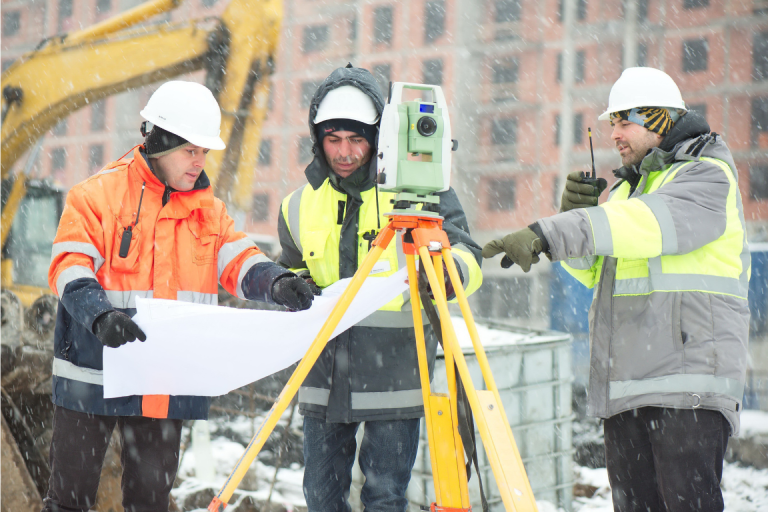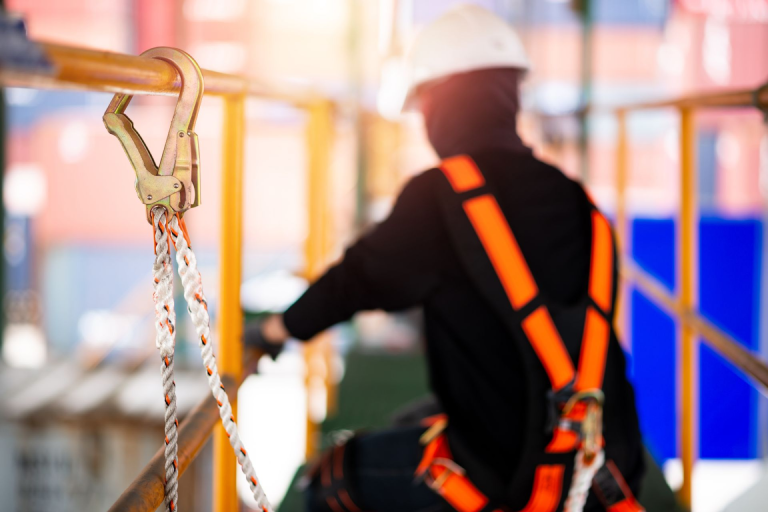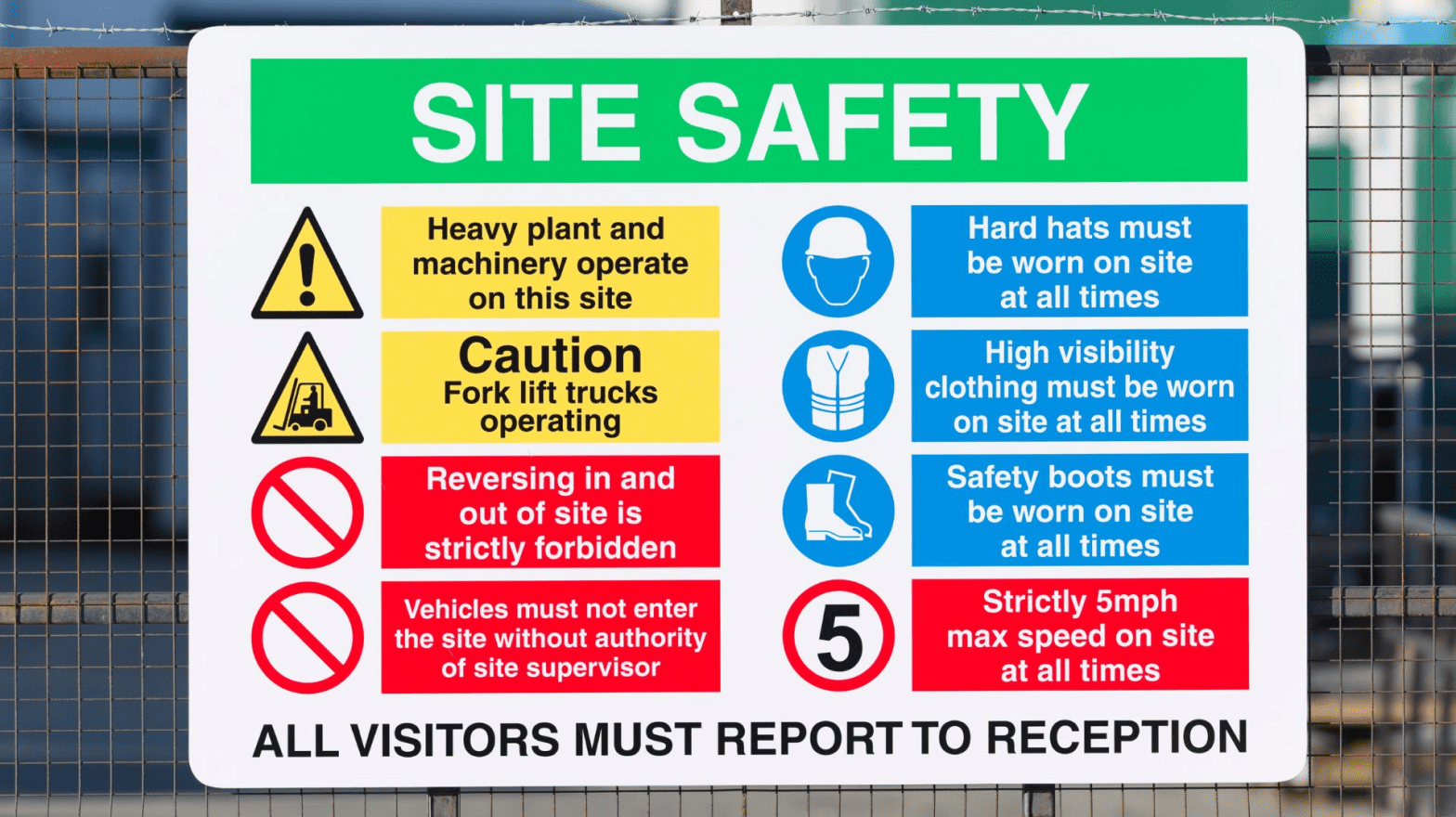6 Safety Tips for Working in Wet & Cold Weather
Working under extreme weather conditions is challenging for anyone, but it can be especially difficult for contractors. Not only do they need to be able to withstand the climate, but they also have to persevere through hours of gruelling manual labour.
It’s even more difficult to work on projects whenever the wet or cold season rolls around. Extended exposure to these conditions can impact your health, so it’s important to take extra care if you find yourself working on a renovation or construction site during winter.
Luckily, we’ve compiled some heavy rain and extreme cold weather safety tips in this blog to help you navigate work during the harshest days.
The Dangers of Cold Weather
When it comes to staying safe while working in extreme wet and cold weather, it’s important to take the wind chill into account first and foremost. What the temperature is and how the temperature feels are often quite different.
Environment Canada looks at the wind chill on a spectrum and has different recommendations based on the temperature. For example, 0 to -9 degrees is considered “low risk” and slightly uncomfortable, but not extremely dangerous.
Conversely, -10 to -27 is considered “moderate risk” and puts you at risk of hypothermia and frostbite. These risks only increase as the temperature drops. Anything below -40 is considered “very high risk” and should be avoided, if possible.

Tips for Contractors to Stay Safe
Your jurisdiction may have defined exposure limits—conditions and prerequisites in which you can or cannot work in extreme wet or cold weather. However, there are no concrete laws or rules, which often puts the burden of safety on the worker.
A good rule of thumb is to approach working in extremely cold and wet weather the same as you would heavy machinery: with extreme caution and care.
1. Wear The Right PPE
Clothing and personal protective equipment (PPE) are your first line of defence. Clothing should be chosen based on the temperature, weather conditions, and the type of work you will be performing to regulate heat and perspiration.
Careful layering is important. The air between layers provides insulation, and having multiple will give you flexibility as temperatures shift or you sweat. Also:
- Make sure your outer layers are larger than your inner layer
- Inner layer should be made of moisture-wicking material such as polyester or polypropylene
- Additional layers should be removable, as excessive sweating can limit the ability of your inner layer to do its job
- Choose a waterproof outer layer in wet conditions
- Avoid cotton whenever possible; it is quick to lose its insulating properties as it becomes damp
- Wear felt-lined, rubber-bottomed, leathered-top boots with removable insoles
Find a full list of recommendations here.
2. Know Your Work Site
Conduct an analysis of the project site you’ll be working on.
This involves ensuring the tasks being performed by each contractor can be done safely to prevent mishaps caused by slippery conditions. It also includes de-icing and inspecting all of the materials, machines, and pathways that will be used.
3. Fuel Your Body Properly
Stay well-fed when working in extremely wet and cold weather. Eating food rich in carbohydrates can help your body produce more energy, which in turn will help you maintain a consistent level of body heat.
What you drink matters, too. A warm coffee may be tempting, but caffeine should be avoided as it dehydrates you by increasing urine production. It also increases surface-level blood flow, expediting the loss of body heat.
Alcohol should also be avoided. It impairs your judgment and puts you at greater risk of making poor choices. It’s also a vasodilator that relaxes your blood vessels, making it harder to regulate body temperature and can lead to fainting.
4. Implement a Buddy System
Never work in extreme wet or cold conditions alone.
Someone should know where you are at all times and constantly be supervising your work. Your employer should make this part of their process, but don’t be afraid to take the initiative and request an on-the-job partner if one is not assigned to you.

5. Take Regular Breaks
Extreme weather conditions necessitate regular breaks.
It’s important to take 10-minute breaks every two hours in a dry and warm shelter. Not only are you giving your body a chance to recuperate, but these breaks also relieve cold-related stimulators in your body.
Do not let anyone pressure you into skipping your breaks to keep working. Not only will the quality of your work suffer, but you are putting yourself—and everyone else on site—at risk of an avoidable accident. Work smarter, not harder.
6. Attend First Aid Classes
If you work in an industry that requires manual labour, knowing the basics of first aid could help save a life in case of an accident. Specifically, learn first aid techniques that teach responses for climate-related emergencies.
Knowing proper safety measures increases success rates and reduces the risk of employees getting severely harmed during an emergency. You’ll feel confident in your ability to help yourself as well as others with this knowledge.
Get An Extra Layer of Protection with Contractors Insurance
Contractors often find themselves working year-round since projects don’t pause just because of the wet or cold weather. There’s still no telling when accidents will happen even if you follow our working in extreme cold weather safety tips.
Protect yourself with an insurance policy catered to your needs. Not only will this help you pay for the damages or expenses caused by an unfortunate incident, but some provinces require workers to have insurance policies before they can take on work.
Contractors Insurance is the leading commercial insurance brokerage in Ontario that specializes in customizing insurance solutions for our numerous clients.
Our dedicated team of experts stands ready to assist you. Contact us today to learn more about what we can do for you, or get started with a quick quote!
BACK TO ALL ARTICLES





Leave a Reply
Required fields are marked *
Leave a Comment